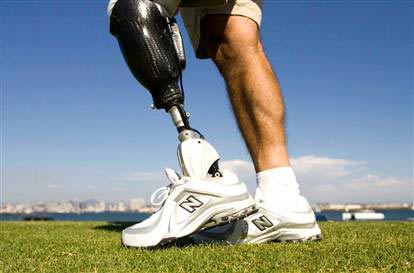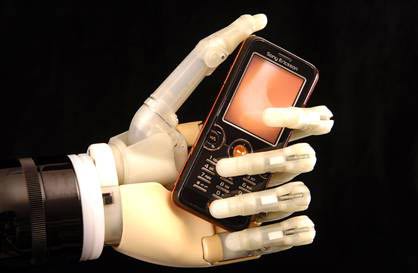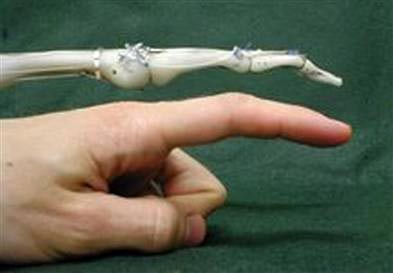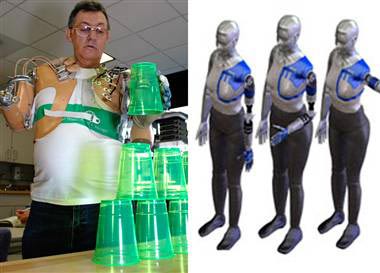High-tech prosthetic limbs
With the support of high technology, prosthetic parts for people with disabilities are now increasingly smart, more convenient with compact size and volume, making it easier for people with disabilities to integrate into the community. .
Highly rated recently, Johns Hopkins Proprio Proprio . The device uses sensors, microprocessors and artificial intelligence to measure real-time movements; responds to information about how the movement and the rotation angles of artificial joints to the actuator match the user's movement.
In addition, this device also uses BlueTooth technology, which can transfer data to the microprocessor to control the foot movement in the most natural way. Proprio can also remember exactly how to move upstairs and downhill, and can learn many ways to move in many different terrains and remember.

The i-Limb electronic arm uses mechanical signals to control the movement of the prosthetic arm, which can be opened or folded. Control signals are taken from electrodes mounted on the surface of the chest muscle skin. With five separate control engines, the i-Limb allows users to grab, hold or hold objects.

Scientists at MIT (USA) have built a robotic hand that has structures like human hand bones, instructing ligaments to control the operating fingers with the help of mounting motors. on the arm .

A man who lost both arms was fitted with a Proto 1 prosthetic arm of Darpa Company (USA), which enabled him to take objects around. This system uses seven degrees of freedom, allowing each arm to hold and grasp objects.

If you want to feel like a real arm, people with disabilities can attach Proto 2 arm . This prosthetic arm can transfer sensations from the hands like heat, force, electrical shock . to the user through electrodes mounted on the shoulder surface. This arm operates with the support of 24 sensors connected to a microcontroller, along with a battery that can be used for 18 hours.
To create these new types of prostheses, scientists have made many advances in many different scientific fields such as energy systems, robots, neuroscience, sensor technology and acceptor structures. onions. Nerve signal-controlled prosthetics can be mass produced in 2009.

MINH ANH
- The fake hand will feel like a real hand thanks to this new system
- Vietnam will have 10 high-tech agricultural zones in 2020
- History of making artificial limbs in the world
- Turn plastic bottles into arms and legs for the disabled
- Artificial Neuralgia delivers life for prosthetic limbs
- Stunned with high tech bus supercar in New York
- Techniques for growing jackfruit with superior yield
- 2,200-year-old prosthesis in a tomb in China
- Prosthetic leg feels like the first true in the world
- Explore the underground high-tech bicycle park in Japan
- Rescue dog wearing high-tech shirt
- What will the high-tech city look like in 30 years?
 Green tea cleans teeth better than mouthwash?
Green tea cleans teeth better than mouthwash? Death kiss: This is why you should not let anyone kiss your baby's lips
Death kiss: This is why you should not let anyone kiss your baby's lips What is salmonellosis?
What is salmonellosis? Caution should be exercised when using aloe vera through eating and drinking
Caution should be exercised when using aloe vera through eating and drinking